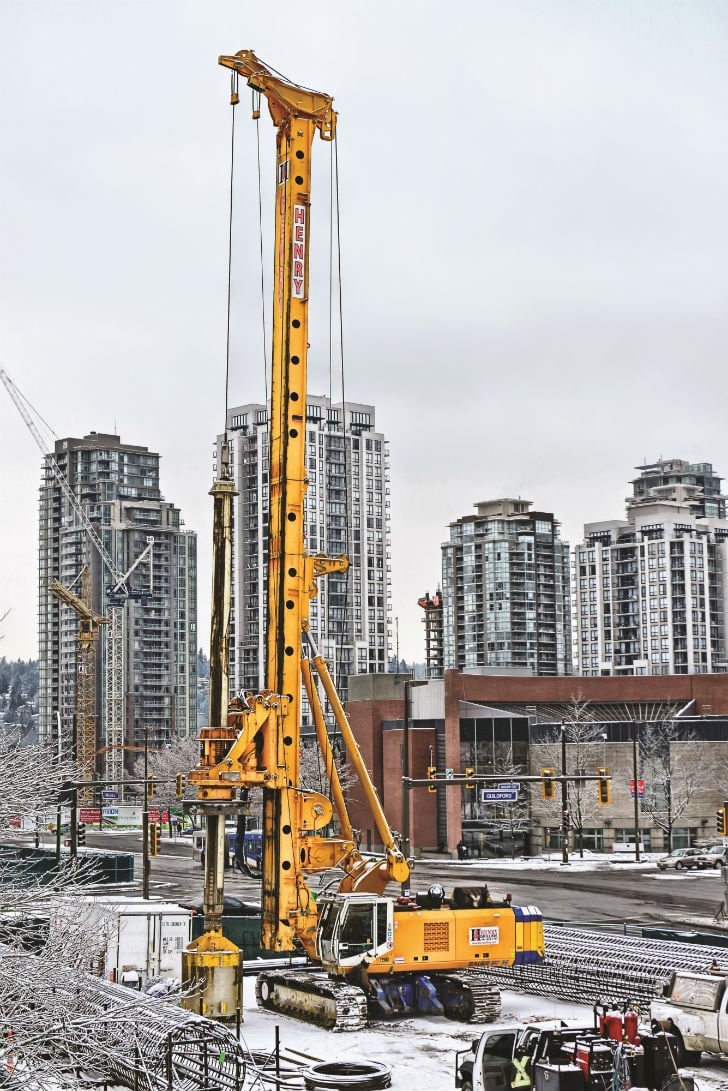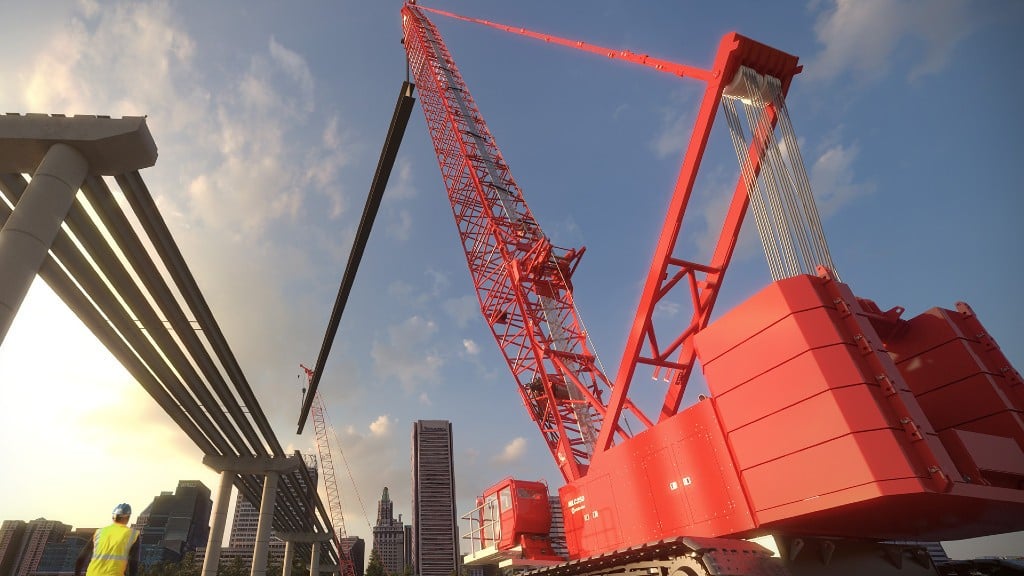Drilling company tackles challenging B.C. transportation projects

Henry Foundation Drilling Inc. (HFDI) is a privately owned drilling company which is sought out for its cutting-edge drilling capability, as well as the ability to provide unique, innovative insights into achieving the core requirements of a project with the most effective solution. Their experience and partnerships with established engineering companies combine to provide clients with real solutions and within the available budget.
The company was started by Barry and Bonnie Henry under the name D&B Auger in 1979. Their legacy and the ownership of the company was passed on to their sons, Don and Ken, in 2004 and the company name was changed to Henry Foundation Drilling Inc.
Don Henry, HFDI president, is very much the heart of the company with a proven track record in presenting competent solutions to difficult problems. With 18 years of experience in the piling foundation industry, he provides a unique level of hands-on experience and real-world project management skills. This allows him to provide realistic approaches to the design and execution of projects that meet the client’s needs and ensures the timely completion of the proposed design. His skills are complemented by the team that he has assembled, comprised of experienced superintendents, drill operators, ground crew, welders, fabricators and office staff. With more than 30 years of experience in the drilling business, their specialty is tackling jobs that few other companies can do, and they have completed a number of diverse and challenging projects all over Western Canada.
Shoring wall for Evergreen Rapid Transit Project tunnel-boring machine, Port Moody, B.C.
For this project, HFDI installed 150 secant piles three feet in diameter, with depths up to 70 feet. The secant piles created a shoring structure to allow a tunnel-boring machine to drill through Burnaby Mountain as part of the Evergreen Rapid Transit Line Project. The timeline was of the utmost importance, so HFDI employed three drill rigs in a tight area and completed the project in a month. Drilling conditions on this project were difficult as an old river bed lay underneath the soil. Some of the boulders encountered were as big as eight feet wide and five feet deep. Despite these adverse conditions, they completed the project on time. This project received a 2014 award from the Vancouver Regional Construction Association for the section of work performed by South West Contracting and Henry Foundation Drilling.
Evergreen Rapid Transit Line, Coquitlam and Port Moody, B.C.
HFDI was selected to complete all of the drilled shaft packages for the new rapid transit line stations.
Lougheed Special Structures: The station required two six-foot diameter drilled shafts to a depth of 66 feet, completed with their BG 36V drill with 2-metre oscillator and 1,800-mm segmental casing. Challenges included a small worksite and working within feet of the elevated guideway carrying the electric current and SkyTrain.
After the six-foot shafts were installed, the machinery was moved to do a special structure that would support the guideway carrying the SkyTrain over a restaurant.
This structure required nine-foot diameter piles up to 21 metres deep which were drilled using a polymer slurry to provide the pressure required to keep the shafts from collapsing as they were drilled. This support is typically provided by heavy steel casing. However, on a nine-foot diameter pile it is sometimes difficult to install steel casing because of the friction generated by the big casing. These shafts were installed as close as eight feet from the active and still open restaurant. The two shafts were installed without any incidents and although there were challenging soil conditions and challenging site conditions, which included granite boulders up to eight feet in diameter, the work was finished on schedule.
Lafarge Lake–Douglas Station: This station had 19 pieces of six-foot diameter drilled piles with permanent six-foot-diameter casing with a one inch thick wall. The steel pipe casing was installed while drilling the pile. Henry Drilling elected to install these piles using a Bauer BG 36V drill and a Bauer BG 28 drill, both with 2-metre oscillators. Pile conditions were tough, with artesian water pressures and different layers of cobbles and boulders.
Moody Station: This job consisted of installing 10 piles, with diameters of either three feet (914 mm) or two feet (610 mm) to depths of 111 feet (34 metres). This job had 15-mmper- second vibration tolerances at the bridge abutments and Henry Drilling was contracted to install them using rotary drilling methods that allowed the work to be completed within the vibration monitoring tolerances.
South Shore Corridor, Port of Metro Vancouver, B.C.
To help build the foundation for an elevated roadway at the Port of Metro Vancouver, HFDI installed 15 drilled shafts 9 feet in diameter, with depths varying from 55 to 75 feet.
Rather than using permanent pipe on each shaft, they installed secant pile compression rings as casing through overburden. Four drills were used for the project: the Soilmec SR-80, SR-50, SR-30, and the Bauer BG 18. They also used their Kobelco 110-ton crawler crane and Mantis crane to hoist the massive rebar cages, some of which weighed up to 102,000 pounds. To meet the schedule, they often ran 24- hour shifts.
Challenges on this site included extremely tight working conditions, large granite boulders and bedrock with compressive strengths up to 100 MPa.


